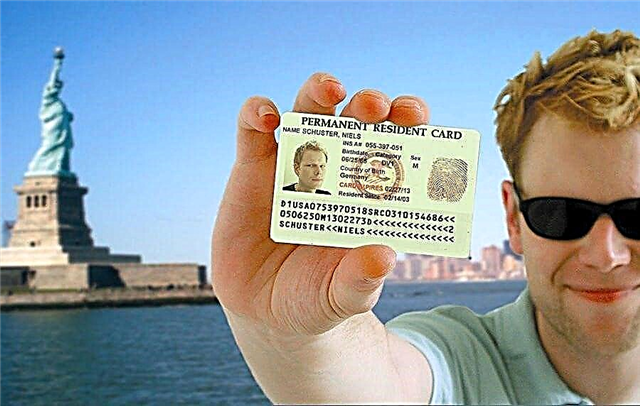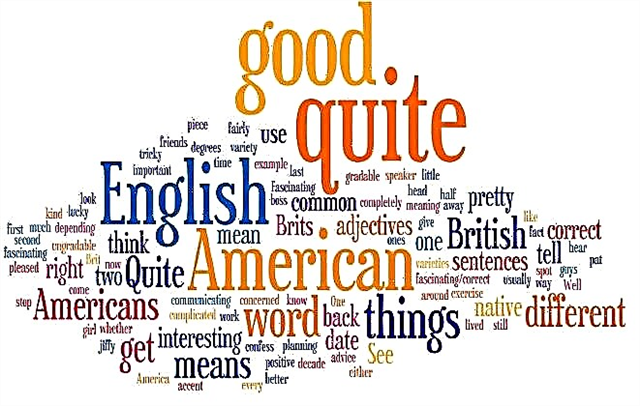The United States of America (USA) is one of the largest multinational countries. The population of this state exceeds 300 million people. Moreover, this figure is named without taking into account immigrants from all over the world living here illegally. It is natural that travelers who are going to visit the country have questions: what languages do the locals speak, what languages of the United States are the state, is there such a thing as an American language.

Official language of the United States
There is no single state language in the United States. About 96% of residents are fluent in English, 80-82% of citizens consider it their native language.
The history of this language in North America goes back to the 17th-18th centuries. Here he was "brought" by British colonists. English-speaking settlers prevailed in the structure of the migration flow in fact until 1776, when the War of Independence began.
Already at that time, 82% of the population of the American states were Protestant English. Their language became predominant, and this trend has continued to this day. That is why almost all the inhabitants of America speak English.
However, English is not recognized as a state language in the United States. Although proposals to grant it this status have been repeatedly put forward, at the federal level they have not been adopted by Congress.
The authorities motivate their decision by the fact that the United States is a multinational country, on whose territory there are today about 322 languages. To recognize one of them as state means to infringe on the rights of the carriers of all the others.
In support of citizens who do not consider English to be their native language, the Civil Rights Act was issued back in 1964.
Despite this, it was English (more precisely, its American dialect) that became the de facto official language in the state. It publishes legislative acts, conducts office work, carries out the educational process in schools and universities. Without knowledge of this language, it is impossible to get a high-paying job. And in 27 American states out of 50, English is recognized as official de jure.
What other languages are spoken in the USA
As the colonists explored North America, various languages appeared on its territory. Immigrants preferred to settle in compact enclaves, and therefore their native languages were spread within the boundaries of certain states. Consider what language Americans speak other than English.
Hawaiian
 This language belongs to the Austronesian language family, has its own vocabulary and its own grammar. Since 1978, it has been one of the official ones in the Hawaiian Islands (along with the English one). At the beginning of the 19th century, it was the main language of communication for the local population. But now the frequency of use is noticeably inferior to English.
This language belongs to the Austronesian language family, has its own vocabulary and its own grammar. Since 1978, it has been one of the official ones in the Hawaiian Islands (along with the English one). At the beginning of the 19th century, it was the main language of communication for the local population. But now the frequency of use is noticeably inferior to English.
So, out of almost 1.5 million residents of the state, Hawaiian is used as the main language by about 96 thousand citizens. The largest community, for which this language is considered the first, lives on the territory of the island of Niihau.
Since 1989, the active restoration of the Hawaiian language began. Now local newspapers, books are published on it, and divine services are held.
The Hawaiian language is taught in schools, colleges and the University of Hawaii, located in the Manoa area of Honolulu (the state capital).
For children and teenagers, there are advanced Hawaiian programs in private schools. For example, at Punana Leo, Hawaiian study groups are recruited from the age of two. The total number of seats is about 800.
Spanish
About 40-41 million Americans (approximately 12% of the country's population) speak Spanish. It is the second most popular in the United States after English.
The Spanish language became widespread in the United States due to the following circumstances:
- the accession to the United States in the middle of the 19th century of the territories that were previously part of Mexico, where the Hispanic population lived (modern southwestern states);
- the territorial proximity of Latin American countries, which are large-scale "suppliers" of Hispanic migrants to the United States.
Spanish is recognized as an official language in the state of New Mexico, on the island of Puerto Rico. The Spanish-speaking states of the United States are:
- Florida,
- California,
- Arizona,
- Texas.
In Florida alone, about 20% of citizens speak it. And the city of Miami, located in the southeast of this state, is almost 67% Hispanic.
More than 30 US TV and radio stations broadcast in Spanish. In most American schools, this is the language taught as the first foreign language.
Russian

In some states, the Russian language is in great demand. In total, about 2 million people use it in everyday communication. Approximately 4 thousand residents of the Alaska Peninsula (and the state of the same name) consider Russian to be their native language. This situation is connected with the fact that earlier this territory was owned by the Russian Empire. And in 1867, Emperor Alexander II officially sold it to the Americans.
Alaska is one of the centers of Russian culture in America. Mass Russian ethnic festivals are held here every year, and the state language of the modern Russian Federation is taught in many local schools.
Answering the question about where the Russian language is still spoken in the United States, it is worth mentioning the Brighton Beach area in New York City. The bulk of its inhabitants are emigrants from the countries of the modern CIS. Many newspapers and magazines published in New York are translated into Russian. Some educational institutions not only teach Russian, but also have programs for the study of Russian literature, history, and culture.
A large number of immigrants from Russia (mainly businessmen) live in the elite areas of the city of Sunny Isles Beach, which is located in Florida near Miami. Here the Russian language has also gained significant popularity. The city itself is often called "little Moscow" by Americans.
Aboriginal languages
The indigenous peoples of the United States (Indians, Eskimos, and others) have largely lost their national languages. For example, about 72% of North American Indians speak exclusively English, and only 18% of them use both English and the language of their tribe in their daily communication.
The following Indian languages are considered the most common:
- Navajo: the number of speakers is up to 180 thousand people, the area is the states of Utah, New Mexico, Arizona.
- Dakota: the number of speakers is 18-20 thousand, the territory of distribution is the states of North and South Dakota.
- Cherokee: About 16,000 native speakers, mostly in North Carolina, Virginia, Oklahoma.
- Oodham: the number of speakers is up to 12 thousand people, the area is the states of California and Arizona.
- Keres, which belongs to the family of Indian languages: the number of speakers is about 11 thousand (Pueblo peoples), the territory of distribution is the state of New Mexico.
About 16 thousand Eskimos living in Alaska use the Yupik dialect (Eskimo-Aleutian language group) in everyday communication.
What other languages are spoken in the United States
 The third most popular language in the United States is Chinese (after English and Spanish). It is spoken by about 2.5 million residents of the state.
The third most popular language in the United States is Chinese (after English and Spanish). It is spoken by about 2.5 million residents of the state.
The prevalence of Chinese is explained by the presence of a large number of immigrants from the Middle Kingdom. Many American cities have entire Chinatowns and districts, which are commonly called Chinatowns.
In fourth place is French. More than 2 million people in the United States use it in everyday communication. He received the greatest distribution in states such as Louisiana, Vermont, New Hampshire, Maine. On the labels of many American goods, information is duplicated not only in Spanish, but also in French.
The popularity of the latter is not decreasing due to the periodic influx of immigrants from Canada, where French is proclaimed one of the state languages. Haitian migrants are the source of the spread of the Franco-Creole dialect in the United States.
Among the leaders in the distribution - and the German language in the United States. Its carriers, according to official figures, are 1.4 million local residents. German is most popular in states such as South and North Dakota.
Due to the constant influx of migrants, the Arabic, Vietnamese and Thai languages are strengthening their positions in the United States. Many European languages (for example, Italian, Greek, Swedish, Polish, Ukrainian), on the contrary, are gradually disappearing from everyday use due to the intensive assimilation of their speakers.
What prospects does American multilingualism have?
At the federal level in the United States, the issue of recognizing English as the state language is still being debated. Although from year to year the number of people who consider him native is gradually decreasing.
At the same time, federal and local authorities continue to support diasporas and create the conditions necessary for them to preserve their culture and language. But every immigrant who plans to live in the United States for a long time must understand that for successful assimilation into American society, it is necessary to have at least basic knowledge of English.
Summing up
From the above, we can conclude that the answer to the question of whether the American language exists is negative. The United States is a multinational and multilingual country dominated by English (although it is not recognized at the federal level by the state).
The popularity of Spanish, French, Chinese and other Asian languages is increasing due to the constant influx of migrants who are their speakers. Languages in the United States have a regional distribution. This fact should be taken into account by those who plan to move to the territory of the state for permanent residence.











